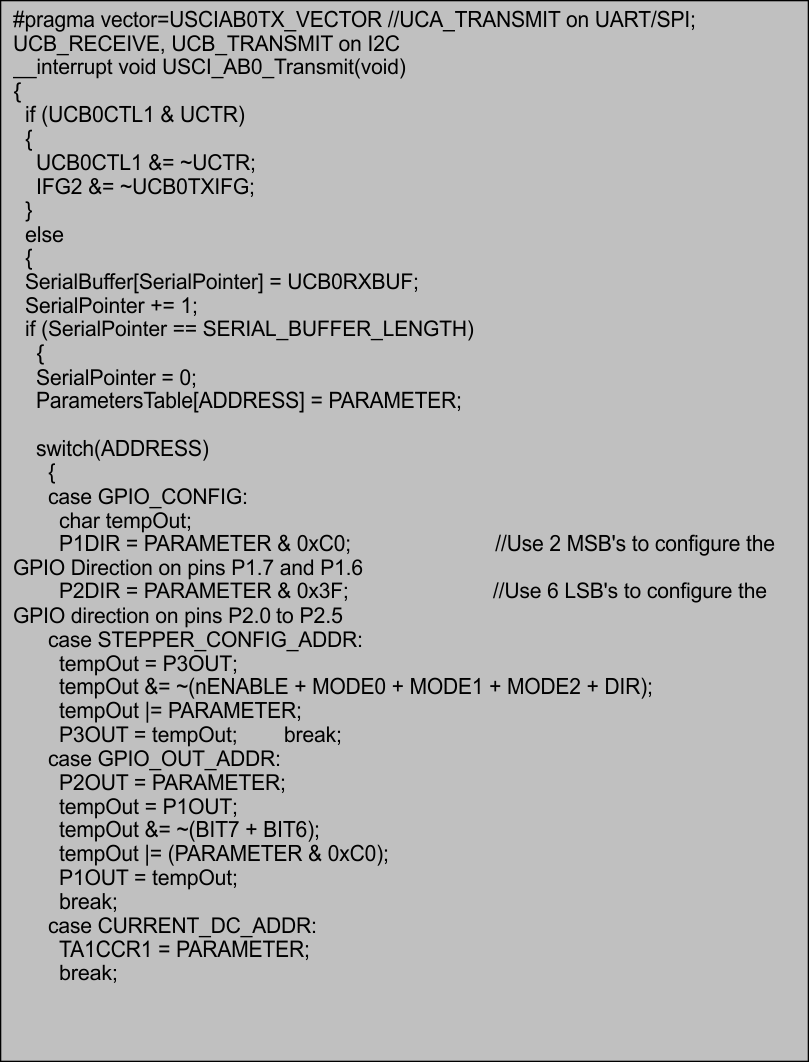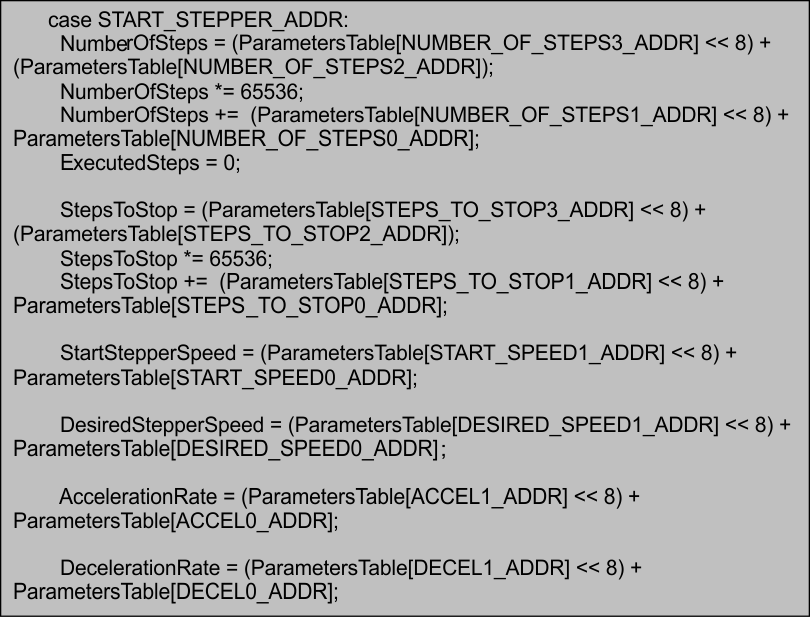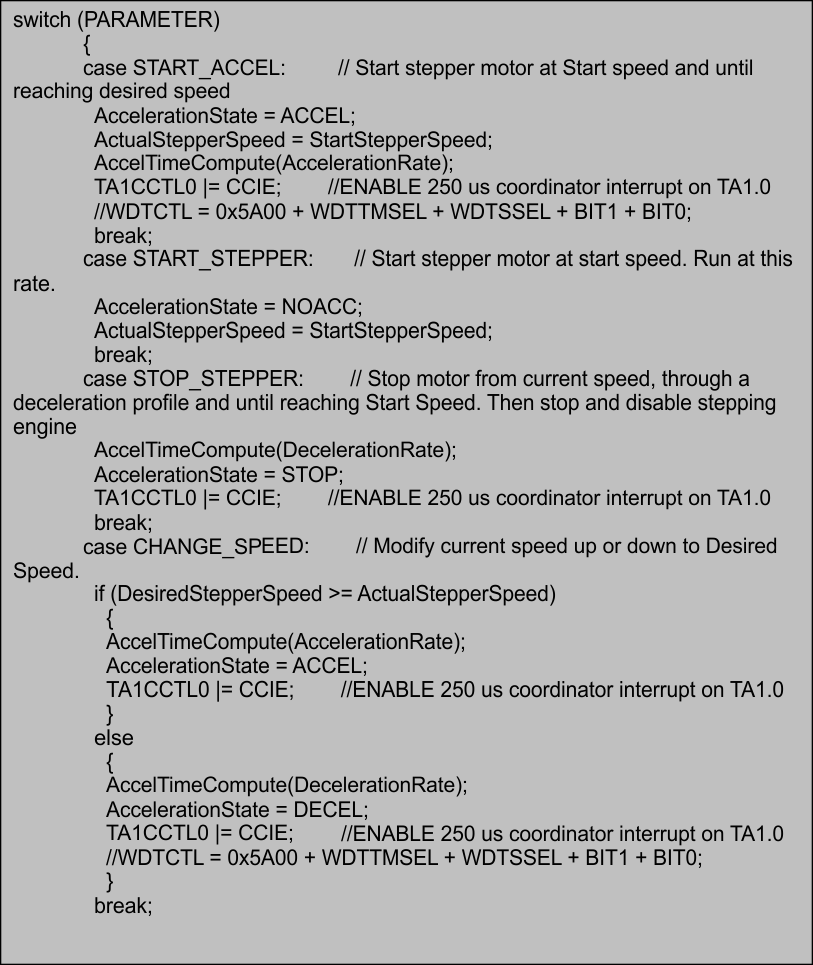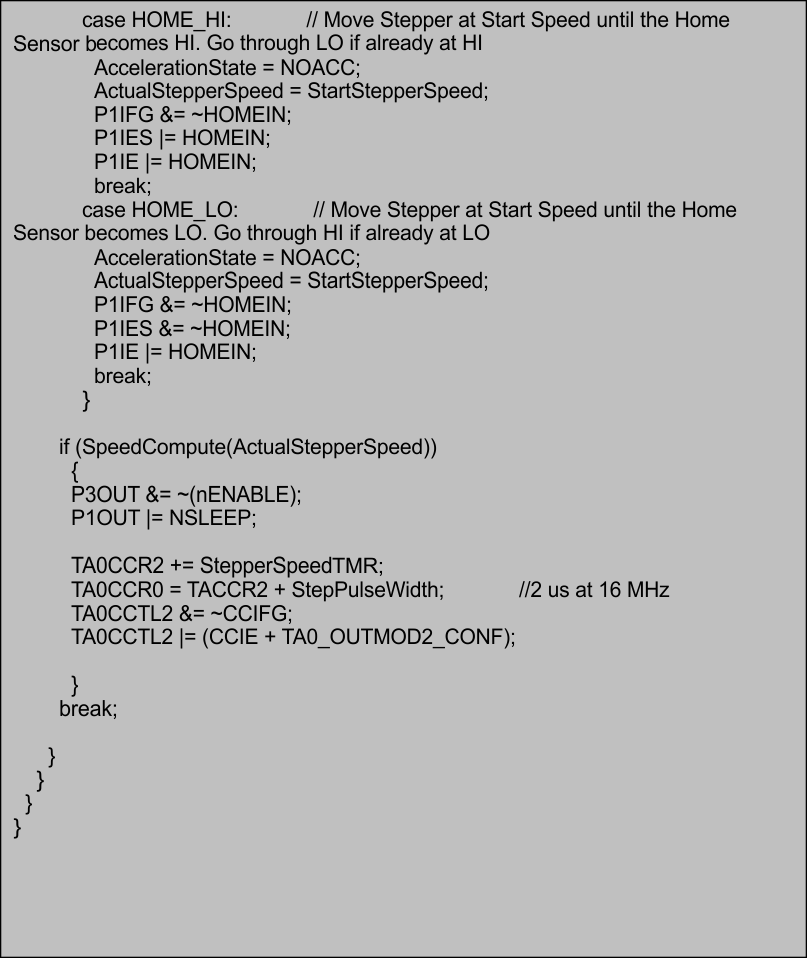SLVA488B January 2014 – January 2021 DRV8434 , DRV8811 , DRV8818 , DRV8821 , DRV8824 , DRV8825
3.5 START STEPPER
This address is more a command than an actual register. A switch case statement decodes the data byte and an action is executed. Possible actions are:
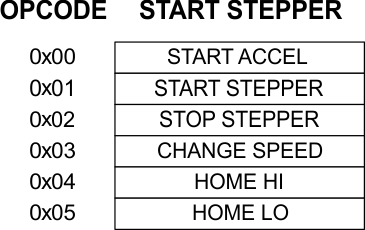
Where:
START ACCEL starts the stepper motor through at the StartSpeed and ramps up until reaching DesiredSpeed. If no other command is received, motor stops once the NumberOfSteps have been executed.
START STEPPER starts the stepper at the StartSpeed. No acceleration occurs. If no other command is received, motor stops once the NumberOfSteps have been executed.
STOP STEPPER stops the stepper while ramping down through the deceleration profile. Motor stops as soon as the StartSpeed is reached or the NumberOfSteps have been executed.
CHANGE SPEED accelerates or decelerates the stepper depending on whether the actual speed is larger or lesser than the new DesiredSpeed. For this command to work, a new DesiredSpeed must be written while the motor is running.
HOME HI starts the motor at the StartSpeed and runs until a transition to HI is observed on the HOME sensor input, or when the NumberOfSteps have been executed.
HOME LO starts the motor at the StartSpeed and runs until a transition to LO is observed on the HOME sensor input, or when the NumberOfSteps have been executed.
The Start Stepper command will configure the stepping engine parameters such as NumberOfSteps, StepsToStop, StartStepperSpeed, DesiredStepperSpeed, AccelerationRate and DecelerationRate. It will then decode the action parameter and start the stepper motor according to the received command. The I2C communications are handled by the USCI RX and TX vector interrupts.
